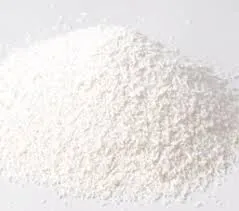
nitrile rubber
Understanding Nitrile Rubber Properties and Applications
Nitrile rubber, also known as acrylonitrile-butadiene rubber (NBR), is a synthetic rubber that has gained popularity across various industries due to its unique properties. Composed primarily of acrylonitrile and butadiene, nitrile rubber is prized for its excellent resistance to oils, fuels, and other chemicals, making it a preferred material for applications in automotive, aerospace, and manufacturing sectors.
One of the standout features of nitrile rubber is its resilience against petroleum-based products. This makes it an ideal choice for seals, gaskets, and O-rings found in engines and machinery. Its ability to maintain integrity at high temperatures further enhances its applicability in demanding environments. Nitrile rubber can withstand temperatures ranging from -40°F to 250°F (-40°C to 121°C), ensuring functionality in various operational conditions.
In addition to temperature and chemical resistance, nitrile rubber boasts impressive mechanical properties. It possesses excellent tensile strength, abrasion resistance, and elasticity. These characteristics are crucial in applications where durability and longevity are paramount. For instance, nitrile rubber is commonly used in the manufacture of hoses and belts, where wear and tear from friction can significantly impact performance.
nitrile rubber

The material’s versatility is also evident in its availability in different formulations. By varying the acrylonitrile content, manufacturers can tailor nitrile rubber to meet specific requirements. Higher acrylonitrile content improves oil and fuel resistance but can reduce flexibility. Conversely, lower acrylonitrile content enhances flexibility at the expense of chemical resistance. This adaptability enables engineers to select the best formulation for their specific application needs.
Nitrile rubber is often used in industries such as automotive, where it can be found in fuel lines, brake components, and air conditioning systems. Furthermore, its use in the manufacturing of medical gloves has gained traction, especially during the COVID-19 pandemic, due to its barrier properties against viruses and bacteria.
Despite its many advantages, nitrile rubber does have limitations. It is less effective against certain solvents and can swell or degrade when in contact with some polar chemicals. Additionally, prolonged exposure to sunlight can cause degradation, making UV protection necessary for outdoor applications.
In conclusion, nitrile rubber is a vital material in modern applications, praised for its oil resistance, flexibility, and mechanical strength. Its unique properties allow it to excel in challenging environments, making it an invaluable resource in the automotive, medical, and manufacturing industries. As technology evolves, the demand for nitrile rubber is likely to grow, further solidifying its role in innovative solutions across various sectors.
-
Aluminum Hydroxide: Quality Gels & Dried Gel AntacidNewsAug.31,2025
-
Buy High-Quality Trichloroisocyanuric Acid for Sale | TCCA 90% SupplierNewsAug.30,2025
-
Pure Sodium Dichloroisocyanurate Dihydrate | Powerful DisinfectantNewsAug.29,2025
-
Industrial Chemicals: Quality & Purity for Every IndustryNewsAug.28,2025
-
Nitrile Rubber Honoring Strict Production StandardsNewsAug.22,2025
-
Aspartame Ingredients Honoring Food Safety ValuesNewsAug.22,2025
-
Fertilizer for Balanced Plant NutritionNewsAug.22,2025
Hebei Tenger Chemical Technology Co., Ltd. focuses on the chemical industry and is committed to the export service of chemical raw materials.
-

view more DiethanolisopropanolamineIn the ever-growing field of chemical solutions, diethanolisopropanolamine (DEIPA) stands out as a versatile and important compound. Due to its unique chemical structure and properties, DEIPA is of interest to various industries including construction, personal care, and agriculture. -

view more TriisopropanolamineTriisopropanolamine (TIPA) alkanol amine substance, is a kind of alcohol amine compound with amino and alcohol hydroxyl, and because of its molecules contains both amino and hydroxyl. -

view more Tetramethyl Thiuram DisulfideTetramethyl thiuram disulfide, also known as TMTD, is a white to light-yellow powder with a distinct sulfur-like odor. It is soluble in organic solvents such as benzene, acetone, and ethyl acetate, making it highly versatile for use in different formulations. TMTD is known for its excellent vulcanization acceleration properties, which makes it a key ingredient in the production of rubber products. Additionally, it acts as an effective fungicide and bactericide, making it valuable in agricultural applications. Its high purity and stability ensure consistent performance, making it a preferred choice for manufacturers across various industries.





